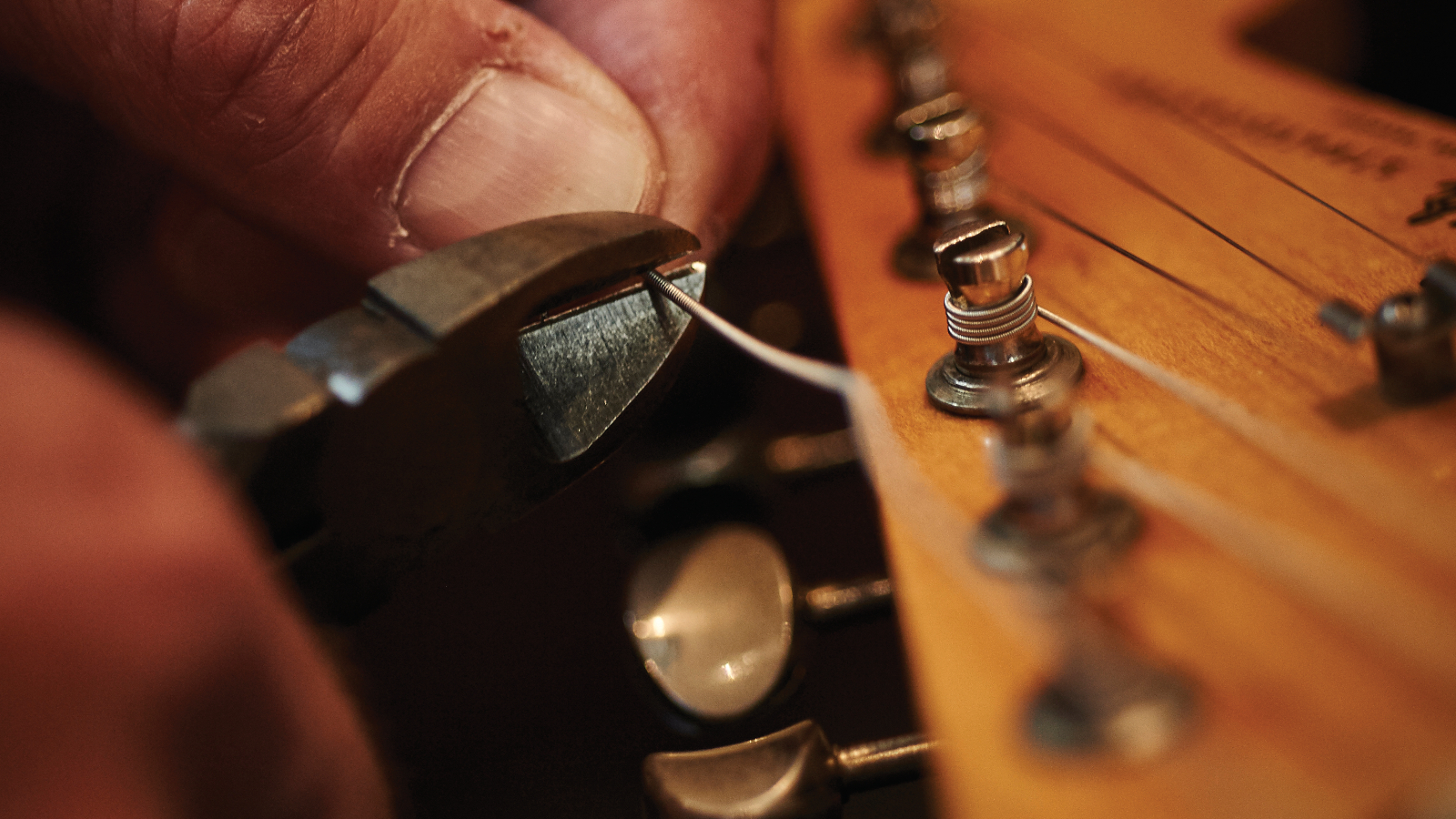Electric Guitar Strings 101
A brief guide to the source of tone.

Changing electric guitar strings is the least expensive way to modify your tone. It may also yield the most dramatic results.
A note originates with the string's vibration, so if you're looking for a different tone, it makes sense to begin your odyssey here.
It’s a Wrap
The wire wrap on a wound string is composed of various alloys. Since each alloy possesses unique response characteristics, the metal formulation of the wrap determines the string's sound.
For example, pure nickel produces a relatively warm tone, while nickel-plated steel is brighter. Stainless steel is brighter still.

Although the overwhelming majority of electric guitar players choose roundwound strings, other wraps are available.
The ribbon wire wrap of flatwound strings, favored by jazz guitar players, produces a mellow fundamental with few overtones.
Half-rounds or semi-flat strings combine a bright tone with a smooth feel. Half-rounds can be made in two ways: By squeezing the cover wire as it is fed onto the core, or by grinding down the surface of a roundwound string.
All the latest guitar news, interviews, lessons, reviews, deals and more, direct to your inbox!

Time to Unwind
Virtually all unwound (or "plain") strings are made of tinned, high-carbon steel. Plain strings have less brand-to-brand variation than do wound strings.
One factor affecting the sound of unwound strings is the lock-twist, the wrap at the end of the string that holds the ball end in place.
However, as long as it remains firm the string will maintain good, strong sustain. Conversely, any string with a loose lock-twist will suffer a reduction in sustain.

Gauge a Reaction
String gauge is critical to tone production. A heavy set of strings has more mass, tension, and magnetic output than a light set.
Heavier strings produce a fatter, bigger sound.
We recommend experimenting with different brands, gauges, and types of strings because it's a cost-effective route to finding better tone.
"For 20 or 30 bucks, you can learn a lot about your guitar by checking out different strings," Tim Shaw told us. "Changing the type of gauge of strings makes a colossal difference in tone."

Take Action
Your action, or string height, is another related issue. "Action has a lot to do with tone," Paul Chandler told us. "The higher your strings from the fretboard, the better your overall tone.
“Have you ever played a Dobro with a real high nut? Part of its volume results from having the strings so high. The angles are increased at the bridge saddles and nut; you have all this great tension.
“Higher action gives you a bluesy, sustaining sound. Your notes feed back more easily, and you don't need as much electrical energy to get your sustain."
Guitar Player is the world’s most comprehensive, trusted and insightful guitar publication for passionate guitarists and active musicians of all ages. Guitar Player magazine is published 13 times a year in print and digital formats. The magazine was established in 1967 and is the world's oldest guitar magazine. When "Guitar Player Staff" is credited as the author, it's usually because more than one author on the team has created the story.
